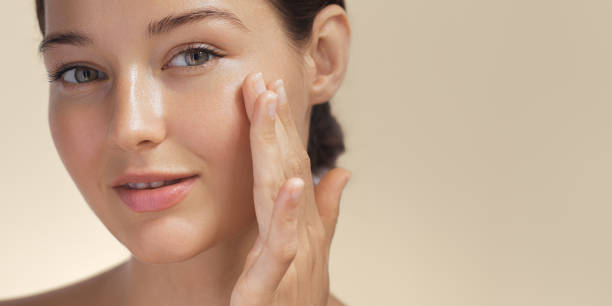Understanding the Role of Exfoliation in Skincare
This article delves into the essential role of exfoliation in skincare, exploring its benefits, various methods, and tips for achieving healthy and radiant skin. Designed for both skincare novices and enthusiasts, this comprehensive guide provides the knowledge needed to elevate any skincare routine.

What Is Exfoliation in Your Skincare Routine
Incorporating exfoliation into your skincare routine involves systematically removing accumulated dead skin cells that naturally build up on the skin’s surface. The skin naturally sheds millions of dead cells daily, but this process can slow down with age, environmental factors, and lifestyle choices. A well-structured skincare routine that includes regular exfoliation helps accelerate this natural process, preventing the buildup that can lead to a dull, rough complexion. Most dermatologists recommend exfoliating two to three times per week, though frequency may vary based on skin type and sensitivity levels.
Key Benefits of Exfoliation for Skin Health
The benefits of exfoliation extend far beyond simple surface cleaning, offering multiple advantages for overall skin health. Regular exfoliation improves skin texture by smoothing rough patches and reducing the appearance of fine lines. It also helps unclog pores, reducing the likelihood of blackheads and acne breakouts. Additionally, exfoliation enhances the absorption of other skincare products by removing the barrier of dead cells, allowing serums and moisturizers to penetrate more effectively. The process stimulates blood circulation, promoting a natural glow and encouraging the production of new, healthy skin cells.
Different Skincare Exfoliation Methods Available
Skincare exfoliation methods fall into two primary categories: physical and chemical exfoliation. Physical exfoliation involves using granular substances or tools to manually remove dead skin cells through gentle scrubbing motions. Common physical exfoliants include sugar scrubs, salt scrubs, and brushes designed for facial use. Chemical exfoliation utilizes acids such as alpha-hydroxy acids (AHAs) like glycolic and lactic acid, or beta-hydroxy acids (BHAs) like salicylic acid. These chemicals dissolve the bonds between dead skin cells, allowing them to be shed more easily. Some people also use enzyme-based exfoliants derived from fruits like papaya and pineapple, which offer a gentler alternative for sensitive skin types.
Essential Exfoliation Tips for Optimal Results
Effective exfoliation tips focus on technique, frequency, and product selection to maximize benefits while minimizing potential irritation. Always start with clean skin and use gentle, circular motions when applying physical exfoliants, avoiding excessive pressure that could cause micro-tears. For chemical exfoliants, begin with lower concentrations and gradually increase strength as your skin builds tolerance. Never exfoliate immediately before sun exposure, as newly revealed skin is more sensitive to UV damage. Always follow exfoliation with a broad-spectrum sunscreen during daytime routines. Pay attention to your skin’s response and adjust frequency accordingly – over-exfoliation can lead to redness, irritation, and compromised skin barrier function.
Choosing the Right Exfoliation Method for Your Skin Type
Selecting appropriate exfoliation methods depends largely on individual skin type, concerns, and sensitivity levels. Those with oily or acne-prone skin often benefit from BHA exfoliants like salicylic acid, which can penetrate into pores and remove excess oil. Dry or mature skin types typically respond well to AHA exfoliants such as glycolic or lactic acid, which help improve moisture retention and reduce signs of aging. Sensitive skin requires gentler approaches, such as enzyme-based exfoliants or very mild physical scrubs used less frequently. Combination skin may benefit from using different exfoliation methods on different areas of the face, addressing specific needs of each zone.
| Exfoliant Type | Key Ingredient | Cost Range | Best For |
|---|---|---|---|
| Physical Scrub | Sugar/Salt granules | $8-25 | Normal to oily skin |
| AHA Treatment | Glycolic/Lactic acid | $15-60 | Dry, mature skin |
| BHA Treatment | Salicylic acid | $12-45 | Oily, acne-prone skin |
| Enzyme Exfoliant | Papaya/Pineapple enzymes | $20-55 | Sensitive skin |
Prices, rates, or cost estimates mentioned in this article are based on the latest available information but may change over time. Independent research is advised before making financial decisions.
Common Mistakes to Avoid When Exfoliating
Understanding what not to do during exfoliation is equally important as proper technique. Over-exfoliation represents the most common mistake, leading to irritation, redness, and compromised skin barrier function. Combining multiple exfoliation methods simultaneously can also cause excessive irritation, particularly when using both physical and chemical exfoliants in the same routine. Neglecting sun protection after exfoliation leaves newly exposed skin vulnerable to damage and hyperpigmentation. Using exfoliants with overly large or harsh particles can create microscopic tears in the skin, while ignoring your skin’s individual response can lead to persistent problems rather than improvements.
Exfoliation remains a valuable tool in maintaining healthy, radiant skin when performed correctly and consistently. By understanding the various methods available and selecting appropriate techniques for individual skin types, most people can safely incorporate exfoliation into their regular skincare routine. The key lies in finding the right balance between effectiveness and gentleness, allowing the skin’s natural renewal process to function optimally while avoiding potential irritation or damage.
This article is for informational purposes only and should not be considered medical advice. Please consult a qualified healthcare professional for personalized guidance and treatment.




